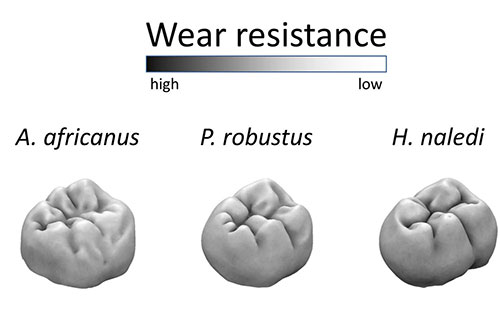The enigmatic 300,000-year-old South African hominin ate a lot of dust, grit, or phytoliths, silica ‘plant stones’
Homo naledi’s relatively taller and more wear resistant molars enabled it to have a much more abrasive diet than other South African hominins. This is the result of a recent study by researchers from the Max Planck Institute for Evolutionary Anthropology in Leipzig, the University of Durham in the United Kingdom and the University of Arkansas in the United States. The researchers conclude that Homo naledi may have eaten a much grittier diet than other South African hominins.
